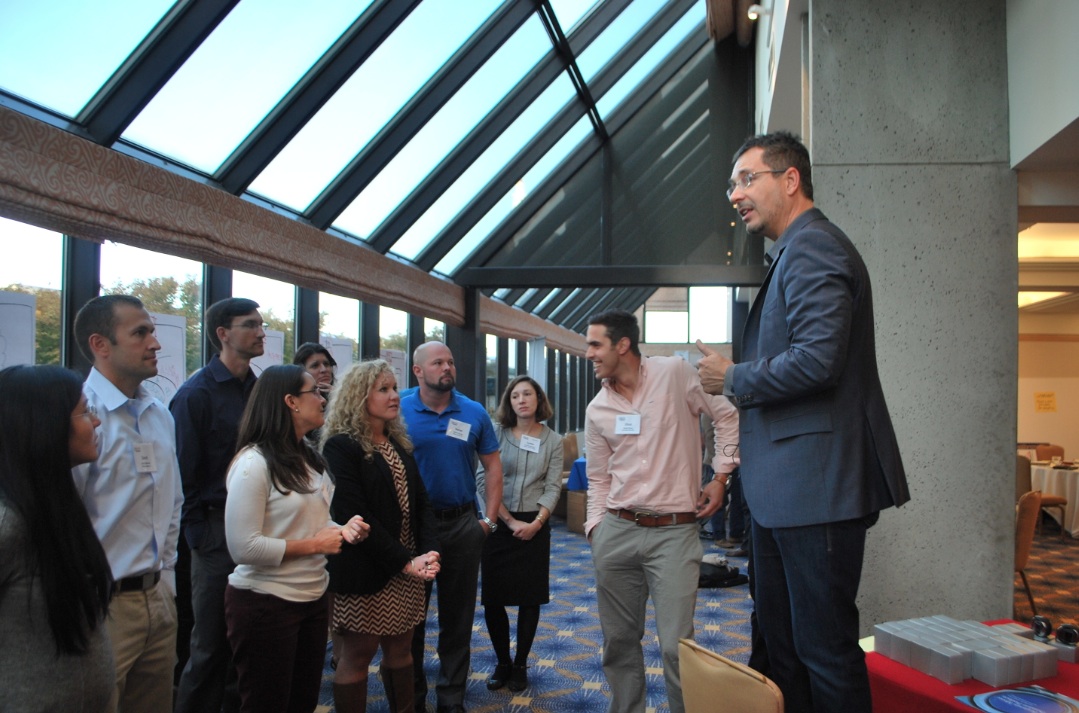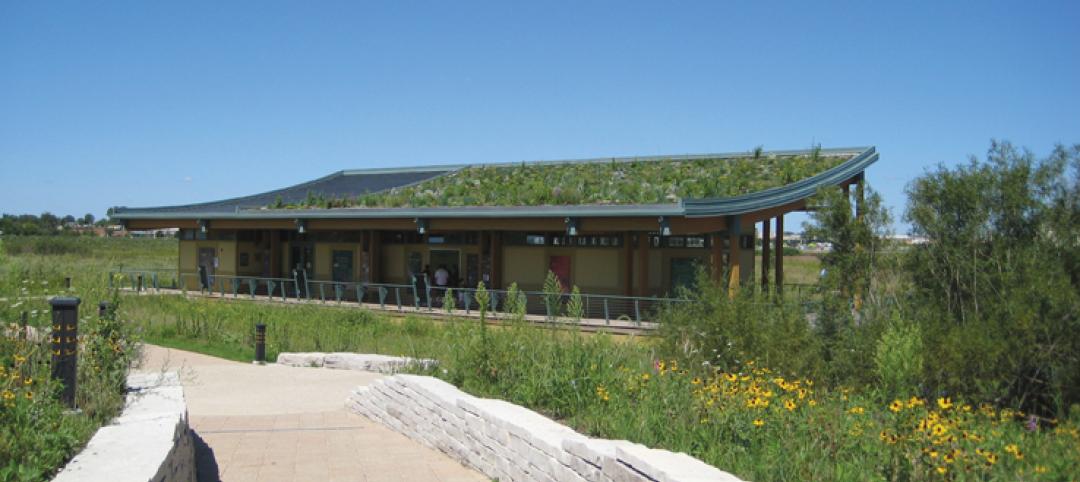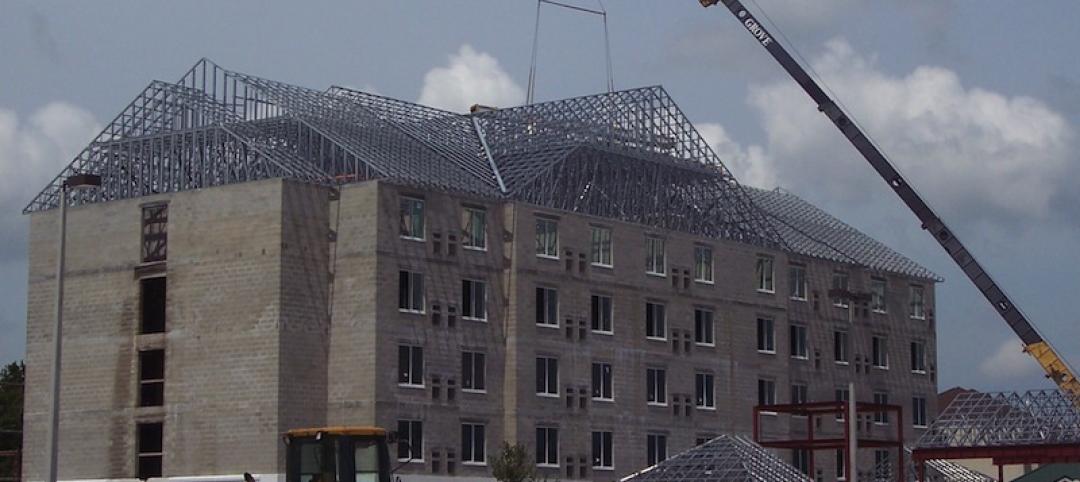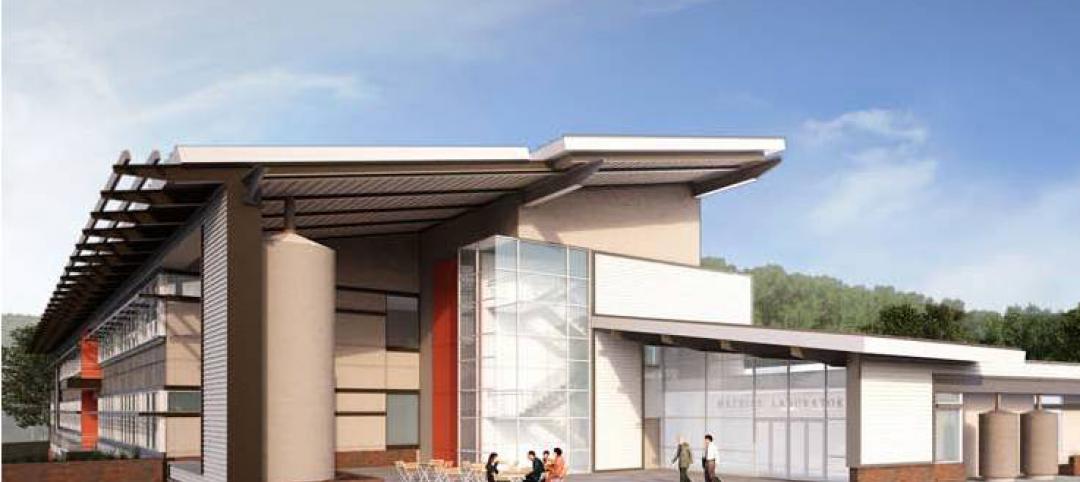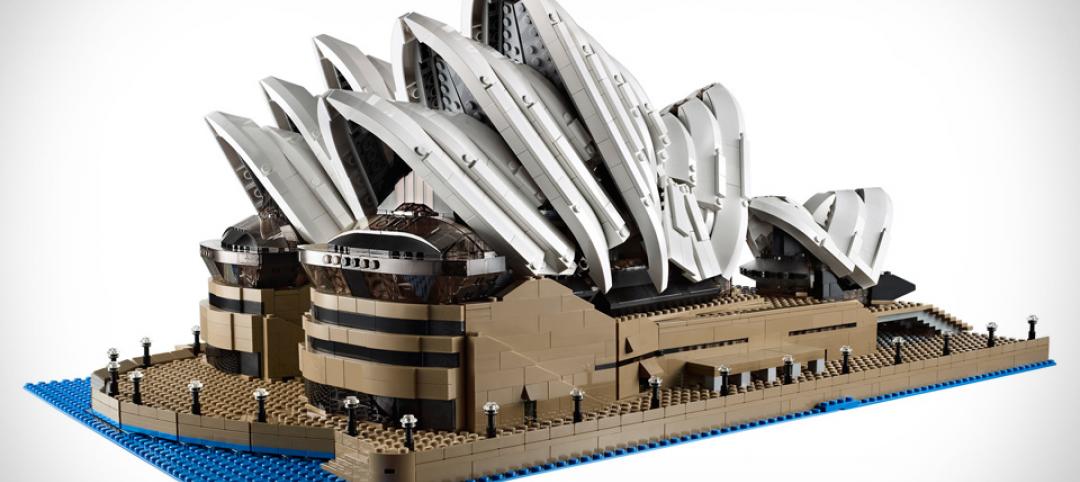Destination Food, an open-source technology platform that connects food supply with demand on a local level, was voted the $3,000 Grand Prize winner in Building Design+Construction's first annual Vision U40 Competition. The competition took place last week at BD+C's Under 40 Leadership Summit in San Francisco.
The goal of the competition was to develop and present innovative solutions for today's pressing social, economic, technical, and cultural problems related to the built environment. Fifteen teams participated in the Vision U40 competition. Each team had just 90 seconds to pitch their concept to the entire group, who voted for their top five.
Here are the five winning teams (click here to see all 15 concepts):
1. Destination Food ($3,000 grand prize winner)
Problem: More than 23 million Americans live without access to affordable, nutritious food. Making things worse, 40% of the food in the U.S. goes to waste.
Solution: Destination Food is an open-source technology platform that connects food supply with demand in a simple, convenient, and affordable way. The app includes a database of profiles and ratings for growers, GPS mapping for connecting consumers to the closest food suppliers, and a scheduling tool for setting up deliveries.
Team:
Cynthia Dubberley, Architect, Eskew + Dumez + Ripple, New Orleans
Christina Weber, Business & Community Development, DIRTT Environmental Solutions, San Francisco
Tyler Krehlik, Architect, SmithGroupJJR, San Francisco
Kelly Dubisar, Architect, Gensler, San Francisco
2. The Kids Are Alright ($500)
Problem: The younger generation prefers to stay inside, whether in the classroom or on the couch. Additionally, parents are missing out on sharing the same learning opportunities their children have.
Solution: Create a Foursquare-type mobile app that, instead of pulling up nearby restaurants, provides educational information based on your current location—from details on the oak tree in your backyard to the history of the landmark building in the center of town. The app encourages kids and their parents to interact with and learn about their surrounding environment.
Team:
Beatrice Tang, Associate Principal, Callison, Seattle
David Monroe, Assistant Project Manager, Balfour Beatty, Dallas
Lauren Smith, BIM Manager, S.M. Wilson & Co., St. Louis, Mo.
3. F.A.B.R.I.C. ($500)
Problem: "Unsocial" media has unraveled the fabric of our neighborhoods. How do we encourage people to get outside and interact and connect with their neighbors and communities?
Solution: This digitized sidewalk encourages people to get outside and weave back into their communities. F.A.B.R.I.C. (short for "future, active, bio-optic, responsive, inter-community" sidewalk) features virtual, interactive games, energy generation, social spaces, and an associated mobile app that, for instance, will alert users when a friend is nearby.
Team:
Elliott Disney, Project Engineer, Southland Industries, Union City, Calif.
Greg Hadsell, Associate, HDR Architecture, San Francisco
Susie Westrup, Sustainability Specialist, Balfour Beatty, Dallas
Nathan Ducote, Project Manager, Balfour Beatty, Dallas
4. WellBOX ($500 - tied for fourth place)
Problem: During the next 20 years, 970 million people will be added to third-world countries. These areas lack access to critical healthcare services and clean water.
Solution: The WellBOX is a portable health clinic that can be dropped into any region of the world to provide clean drinking water and healthcare services and education. The self-sustaining unit will be powered by solar panels and will tap into a local well to provide water filtration. The modular structure will come equipped with tele-medicine equipment, allowing doctors to diagnos remotely.
Team:
Emily Guglielmo, Senior Structural Engineer, Martin/Martin, Larkspur, Calif.
Candace Small, Architect, VOA Associates, Chicago
Vincent D'Ambrosio, Senior Vice President, Hill International, Marlton, N.J.
Chris Hermreck, Project Manager, JE Dunn Construction, Kansas City, Mo.
4. Internext ($500 - tied for fourth place)
Problem: The digital information world offers us instantaneous, universal access, but inundates us with data in a constant, overwhelming stream. As a result, our connections to others and our surrounding community are becoming less meaningful. We've lost our sense of place.
Solution: Internext filters when and where you receive specific digital information based on rules you set, helping you prioritize your life following preferences that reflect your values. Want to spend more time with your family? Set a rule that holds all email after 6 p.m. on workdays. Want to connect with fans of your favorite team while on vacation? Let Internext find the popular hangouts.
Team:
Dace Campbell, Customer Success Manager, Autodesk, Shoreline, Wash.
David Mayman, Architect, Gensler, San Francisco
Craig Chinn, Associate Principal, KTGY Group, Irvine, Calif.
Molly Engelbert, Assistant Project Manager, Balfour Beatty, Dallas
Related Stories
| May 25, 2011
Low Impact Development: Managing Stormwater Runoff
Earn 1.0 AIA/CES HSW/SD learning units by studying this article and successfully passing the online exam.
| May 25, 2011
Register today for BD+C’s June 8th webinar on restoration and reconstruction projects
Based on new and award-winning building projects, this webinar presents our “expert faculty” to examine the key issues affecting project owners, designers and contractors in case studies ranging from gut renovations and adaptive reuses to restorations and retrofits.
| May 25, 2011
Hotel offers water beds on a grand scale
A semi-submerged resort hotel is the newest project from Giancarlo Zema, a Rome-based architect known for his organic maritime designs. The hotel spans one kilometer and has both land and sea portions.
| May 25, 2011
Smithsonian building $45 million green lab
Thanks to a $45 million federal appropriation to the Smithsonian Institution, the Smithsonian Environmental Research Center in Edgewater, Md., has broken ground on what is expected to be one of the most energy-efficient laboratories in the country. The 69,000-sf lab is targeting LEED Gold and is expected to use 37% less energy and emit 37% less carbon dioxide than a similar building.
| May 25, 2011
World’s tallest building now available in smaller size
Emaar Properties teamed up with LEGO to create a miniature version of the Burj Khalifa as part of the LEGO Architecture series. Currently, the LEGO Burj Khalifa is available only in Dubai, but come June 1, 2011, it will be available worldwide.


